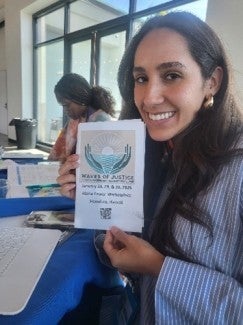HEART Program, Helping End Abuse and Recruitment of Trafficking
By: Felicitas Brugo Onetti, MSW I Anti-Trafficking Education and Outreach Coordinator | Migration and Refugee Services
Overview of the USCCB Anti-Trafficking Program
At the United States Conference of Catholic Bishops, various committees and programs are created and implemented to promote the greater good of the Church and its people. One of these programs is the Anti-Trafficking Program. The Anti-Trafficking Program was created to educate and advocate for survivors of human trafficking and to uphold the dignity and worth of the individual despite the tragic situations that they face. Millions of men, women, and children are exploited and trafficked within the United States and abroad. Through educating and advocating for survivors of human trafficking, the dangers of this, and the statistical prevalence of human trafficking in the world today, efforts can be examined and acted upon for the greater protection of our brothers and sisters.
Hawaii Program Initiative
One of these program initiatives is working with Indigenous communities regarding human and labor trafficking. Although this is a new program, there is much work to be done as the impact of trafficking is great in this community. In 2023, 110 signals were received by the Human Trafficking Hotline with 34 signals received from victims or survivors of human trafficking. Although this number may seem small, that does not mean that human trafficking is not prevalent. Human trafficking takes many forms such as sex and labor. When developing the curriculum for students in Hawaii, it was critical to ensure that the educational components of what is human trafficking and others were covered. Indigenous communities may not obtain the resources or support to implement change within their communities as it is a complex situation.
Within the labor market, Indigenous communities may not understand the complexities of human trafficking and that through working in the importation market, especially in the fishing industry, their rights are being taken advantage of. The impact of this conference and curriculum program highlighted the criticality of explaining what human trafficking was, the prevalence within their communities, how to grow trust and relationships with agencies in the various islands to expand their knowledge of how to look for human trafficking victims, and more.
The implementation of this program went very well, and promising efforts were made through conversations with various organizations and the University of Hawaii to work with students and help educate them on what is happening in their communities and what they would like to see occur. Through this, students were able to directly interact with stakeholders and others in the community that are passionate about this issue to advocate for the vulnerable population of Indigenous communities and raise awareness of how what is happening and what changes can be made.

